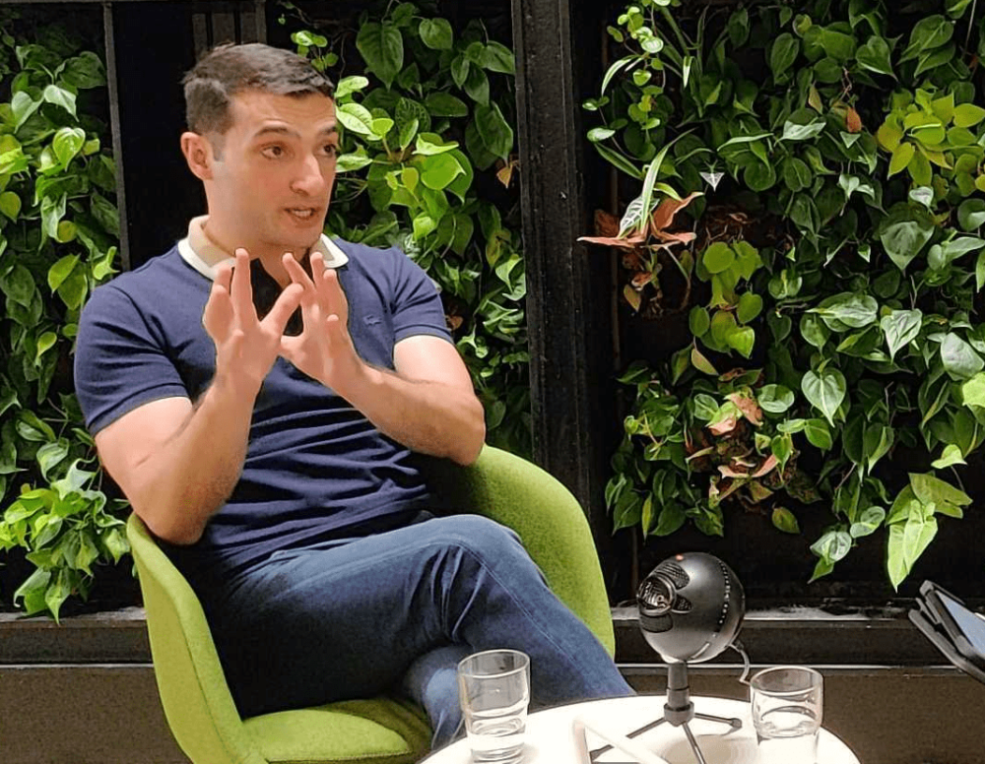Technologies that enable urban agriculture, production of protein from non-animal sources, and farm automation will be critical for countries in the Asia-Pacific region to ensure food security in the near and longer term.
That’s the view of Armen Harutyunyan, senior advisor, sustainable and digital agriculture at the United Nations Development Program (UNDP) Global Center for Technology, Innovation, and Sustainable Development.
He was speaking to AgFunder Asia director John Friedman during the first edition of NURTURE – a series of TED-style talks on the future of the global food system presented by GROW, the agrifood impact accelerator powered by AgFunder. [Disclosure: AgFunder is AFN‘s parent company.]
AgFunder is launching an impact fund. Here’s why
Based in Singapore, the UNDP Global Center aims to identify technological solutions for sustainable development, and then help to build those solutions by forming partnerships via its worldwide network of policymakers, development organizations, and businesses.
Ensuring both food security and the economic wellbeing of those who produce food — including hundreds of millions of low-income smallholder farmers worldwide, with a majority in East, Southeast, and South Asia — is a central theme of that mission. This has become even more pertinent in the wake of Covid-19 and the catastrophic impact the pandemic has had on food production and supply chains.
GROW’s NURTURE series of virtual talks has been created to inspire entrepreneurs to help shape a more resilient and sustainable food system for the future. Each of the four talks will be delivered by an agrifood thought leader from Asia Pacific, which is the focal region for the series.
You can get more details on NURTURE here, and sign up for the remaining talks here. Below are some of the highlights from Harutyunyan’s session:
-
- At its simplest, ‘food security’ means that everyone has a sufficient amount of safe food to eat. But when we look at how we can ensure food security for the future, we need to think of it in more granular terms of “accessibility, affordability, and availability,” Harutyunyan said. “[That means] everyone has physical access to the product, but also has the resources to fully afford it. During the [Covid-19] pandemic one of the issues that we faced, and have to address for the future, is the stable supply of food because disruptions in the global value chains resulted in food security challenges in different parts of the world, including this region.”
- The UNDP Global Center believes there are three pillars for countries to realize food security: Self-sufficiency, stable imports, and strategic stockpiling. “But it’s also important to look at cooperation and partnership [between countries],” Harutyunyan said, adding that we need to be thinking about “the role of more developed countries, those countries that are producers of technologies, in terms of contributing to regional and global food security.”
- The technologies he was referring to are those “that can help to drive efficiency, productivity, but also sustainability of food production within individual countries, and within the region,” he said. “If the Second and Third Industrial Revolutions led to development of solutions such as agricultural machinery, chemical fertilizers, genetically modified seeds, and stuff like that, when we look at the Fourth Industrial Revolution [perhaps] digital technologies can transform the sector.” That means understanding “how to use the data [generated by] the agriculture and food sectors, to make [them] more efficient, productive, and sustainable.”
- Harutyunyan identified farm automation as one of the key tech areas of interest in helping to shore up food security in Asia – despite it often being seen as out of reach for smallholders, who dominate agricultural food production in the region, due to affordability and job security concerns. “Of course this solution is more more expensive at the moment,” he said. “But […] gradually, in my opinion, we will move to the autonomous farm [model] where you basically receive data, analyze data, send the signal to the necessary machinery, and that machinery does the rest of the work.”
- He acknowledged the view that, as robotics and other automation technologies become more widespread in developing countries, smallholder farmers stand to lose out. But he doesn’t necessarily agree with it. “People are always kind of concerned about [that but] there would be more people moving into urban communities, and [for those that remain] in rural communities […] it will provide them with the opportunity to expand their production by adopting new technologies. So it’s going to be a balance,” he said. “They will produce enough food to meet that global demand, and others would move to urban areas to find a more vibrant economic life or a different lifestyle. It’s a normal process of economic development that we’ve seen for years and years, and particularly when you look at the pattern in developed countries.”
- Another area of agtech the UNDP Global Center sees as crucial for Asian food security is urban agriculture, including vertical and indoor farming. “By 2050, according to UN estimates, 67% of the global population will be living in cities,” Harutyunyan said. “Therefore, urban and vertical farming has the potential to supply some types of fresh products because supply chains are getting more complex, and delivering fresh products [over distance] is not that easy or cheap. Urban agriculture has good potential to fill that gap.”
- Alt-protein technologies could also have a positive impact on Asia-Pacific food security if companies working in the space can effectively “be synergized with the consumer behavior change,” Harutyunyan suggested. “Consumer preferences and behaviors [have seen a] change within the ‘Millennials’ and ‘Generation Z’ and so more people really care more about sustainability. [They’re asking] who is producing our food? Is there any exploitation behind a particular product? But also how to minimize the impact on the environment and how to maximize the social [impact] of those technologies.”
Got a news tip? Email me at [email protected]




